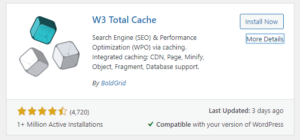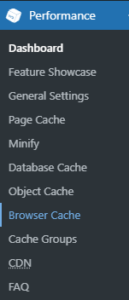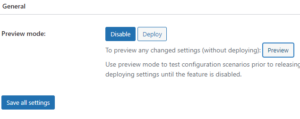How to Set Up Caching on a WordPress Website
In this article, we’ll justify the way to set up caching in WordPress using a popular plugin.
On my WordPress website why do I need browser caching ?
Caching could be a way of speeding up your website’s loading time. It will this by obtaining a user’s browser or device memory to store components of your webpage so that when they visit a page once more, only the modified or dynamic content has to be downloaded. This will considerably reduce amount of time a webpage takes to load.
Website loading speed is very important for 2 reasons. Firstly, it helps to prevent users abandoning the web site as a result of it loads too slowly and, secondly, because of search engines use web site speed as a ranking criterion once displaying search results.
Which plugin is more useful for browser caching?
There are quite few caching plugins to settle on from within the WordPress repository. Whereas we do not recommended any specific plugin here, we just suggest to select one that is compatible together with your version of WordPress, is kept up-to-date by the developer and that has good reviews from users.
For this specific tutorial, we are going to use WP Total Cache, a plugin with over 1,000,000 active users and over 3,400 5-star reviews.
Let’s see the steps to set up caching using WP Total Cache
1. Log in to your WordPress admin panel using username and password.
2. Scroll to Plugins > Add New which is present on dashboard in left hand menu.
3. A new window will get open from there, in the Add New page search bar, type ‘Caching’, you will get a list of all the caching plugins, if you want to choose a different plugin of your choice you can go with that one.
4. From the list search WP Total Cache and click the Install Now button.

5. Once the installation get’s complete, click the Activate button.
6. After activating WP Total Cache, a new item named as Performance, will be get’s added to the left-hand side menu of your website dashboard.

7. Navigate to Performance > General Setting
8. within the General section, change Preview Mode and click on Save All Settings. Preview Mode permits you to see the consequences that your WP Total Cache settings have on your web site before making them live. This can enable you to check your settings choices to make sure they don’t stop your web site from operating properly.
9. Scroll to the Page Caching section, mark tick to the Enable box and click on the Save Settings & Purge Cache button.
10. Scroll up to the General section, click the Preview button and ensure your web site is functioning as expected.
If the functioning is not proper you can scroll back to the Page Caching section, untick the Enable box and click on the Save Settings & Purge Cache button. This can disable Page Caching.
11. If web site is working properly, you can repeat the method for the Database Cache and Browser Cache.
Remember: You have to enable these one at a time, click Save Settings & Purge Cache once checking the Enable box and preview the changes before moving on to next section.
If any effect on your web site, disable by removing the check of the enable box and clicking Save Settings & Purge Cache.
12. Once your caching choices are enabled and therefore the previews show that your web site is functioning because it should, you can make these changes live. To do this, scroll up to the General box, click the Deploy button after that click on the Save All Settings button.

13. Caching can now be set up on your web site and your web site can load more faster on users’ browsers.
